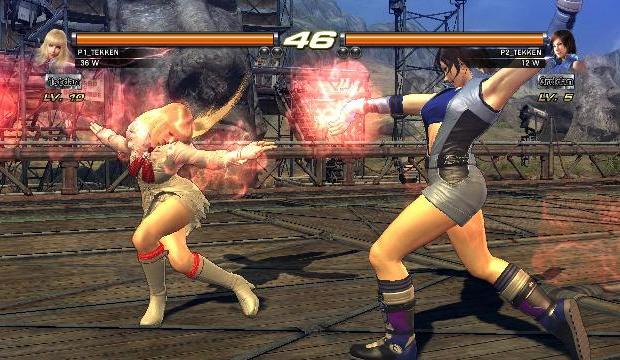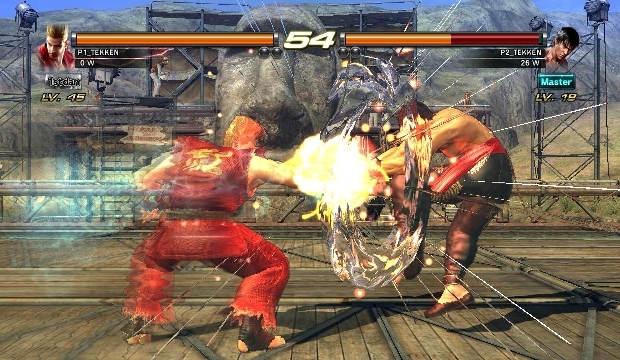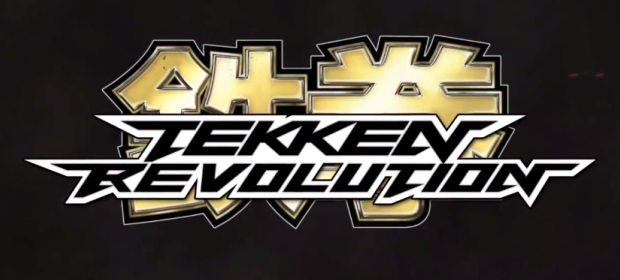Tekken has become a fairly predictable title. When you pick up the latest version, you already know pretty much what to expect from the game. Of course, there are the slight variations in the theme – such as Tekken Tag – but the overall experience is very much the same between one game and the next. What started as a simple one-on-one coin-op fighting title has become a sprawling mass of side-modes, mini-games and character customisation. Tekken Revolution is a new free-to-play entry into the series – exclusively available on the PlayStation Network – that manages to take Tekken back to its Arcade roots, for better or worse.
Now, you shouldn’t enter into this with expectations of the full Tekken experience. Almost all of the bells and whistles have been taken out of the equation since Tekken Tag Tournament 2, to leave simple versus fighting – and you will need to pump virtual change into the game in order to play. Players can hold two arcade coins at any one time (replenished for free once every sixty minutes) for taking part in the AI arcade mode, and five battle coins (which replenish more quickly, every thirty minutes), which are used for ranked or online fights. This does slant the focus of the game somewhat towards online – as if the developers are asking gamers to play that way. Those are the only modes included in Revolution at the moment, which leaves your options a little thin on the ground.

The freemium idea comes into play when you’ve used up all of your basic coins, but want to continue fighting. You can be awarded premium tickets randomly after some fights, which you are free to use in whichever mode you wish. But these are awarded quite infrequently, so if you want to play more often than that you have the choice to buy a pack of 30 premium coins (which act the same as tickets) for £3.99 via the PlayStation Store. This is obviously cheaper than buying thirty turns at a physical arcade machine, so isn’t terrible value, but players should be conscious of their in-game wallet, as you can’t simply rinse the game as quickly as you want without spending extra money.
Several new ideas have been implemented to adapt the title for a more competitive online community, and to reward players for putting more time and money into the game. The gameplay is very similar to most Tekken games, but bound manoeuvres – ones which set up or extend juggles by launching your opponent off a floor or wall – are almost entirely removed from the game. This will mean that it is harder for a skilled player to just destroy a newcomer with one long combo, making things a little more friendly. Combine that with the new Special Arts and Critical Arts moves – which are fast, high-powered moves, pulled off with simple button inputs – and the fight system is easier to pick up than it has been for quite some time, allowing even the uninitiated to pull off some impressive-looking attacks.
For the first time ever in a Tekken game there is a stat-levelling system. Here you will win skill points through successful battles and clearing arcade mode, which can be spent across three attributes for your fighters. There is Strength (attack power), Endurance (health bar) and Vigour (your ability to hit critical strikes). You have to level up each character individually, which means you can’t make an unbeatable roster immediately, and also means you can specialise different characters for different roles. You could build a Tank character with high health, and an expert Striker, for instance – assembling a diverse roster to handle different situations.

These skill points, just like coins, are earned much faster in multiplayer matches – which again tips the game in the direction of fighting against strangers – just like in a games arcade. In fact, with higher XP and fight rewards also being doled out for online play, and the fact that Arcade mode is fairly short and basic, one might surmise that Revolution was originally conceived as an online only title. Even to play Arcade mode you need to be signed in online so that the game can monitor your credits – so the game is essentially online-only. Indeed, you can’t even participate in friendly play from your own couch as there are no local play options. But then, there is no money to be made from that, I suppose.
The longevity and lifespan of the game will ultimately depend on the post-release support from Namco. Extra characters have already been added to the game (who are unlocked as you progress), but what else may come? A training mode has been mooted – and with players unable to practice for free in any mode, this would certainly be a welcome way to at least test out the new gameplay mechanics and hone your skills. As it stands, the learning curve is still steep despite the changes, because most of the time when you play online you will be matched against someone who has managed to upgrade their character stats a lot more than you have. This can result in very one-sided fights, but does show that playing the game more will give you an advantage, if you do decide to invest more. It also means you get a greater feeling of satisfaction if your low-powered character manages to beat a heavily upgraded one.
Visually, Revolution remains close to Tekken Tag 2 in many ways. Stages and character models are lifted directly from one to the other, and animations are all as slick as they were in the previous game. A strange cel-shaded filter seems to have been added to the characters, though, giving the title a slight look of Street Fighter IV – although it isn’t pulled off with as much style. This does cause somewhat of a disconnect between characters and background though, as the contrast is quite stark and takes away from the realistic style that the game usually strives for. Aside from that, and the new speed-dash Critical Arts move animations, the aesthetics remain very pleasing for a free game, and the online performance is very smooth. Very little lag is apparent in multiplayer battles, so playing Tekken online is as robust as ever.

VERDICT: The changes implemented in Tekken Revolution are bound to please some, whilst angering others. Those who are dipping their toes into the series or casual Tekken fighters who won’t play frequently are likely to enjoy the lighter experience. The simplified gameplay mechanics and additional balancing ideas should provide a more level playing field to start off on. Longtime series fans, however, are likely to be left cold by this stripped-down title, which eschews the combo-juggling they are used to.
But then again, those players probably aren’t the target market for this online title. Those who love the regular Tekken titles will be better served by sticking with Tekken Tag Tournament 2 – and it is doubtful that Namco were looking to take their custom away from that game. This is a casual title, with casual gameplay modes and techniques, aimed at the free-to-play casual market. Returning to a pay-for-credits business model makes sense for a game that grew up in the arcades, but it is a bold move for such an established series. This could well win Tekken a whole new crowd of fans – albeit a crowd that wouldn’t mix well with traditional Tekken players.

GOOD. A game that scores 7/10 is worthy of note, but unworthy of fanfare. It does many things well, but only a few of them incredibly well and, despite a handful of good qualities, fresh ideas and solid mechanics, it fails to overwhelm.







